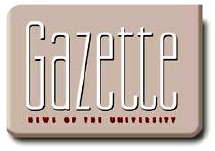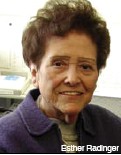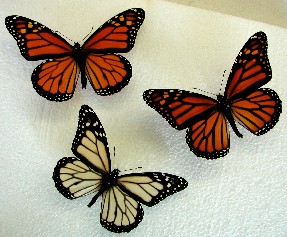
| Vol. 14 No. 1 | Summer 2004 |


2004 LEGISLATIVE SESSION
For the University of Utah, there were several notable results of the
2004 legislative session.
With all new funding taken into account, the U’s ongoing state funding was increased by about $5.95 million, or 2.9 percent. A one percent salary increase and a one-time bonus were provided for state-appropriated faculty and staff.
The legislature appropriated $2.26 million for enrollment growth, which is 10.4 percent of the request made for unfunded growth. It also decreed that another 24.2 percent of that unfunded growth would be paid for using second-tier tuition revenue.
Prior to the legislative session, the Board of Regents had approved a 4.5 percent increase in tier-one tuition for all institutions in the Utah System of Higher Education. The legislature subsequently changed the tier-one tuition increase to three percent and specified maximums for tier-two tuition for each institution. The regents later approved a seven percent tier-two increase for U of U undergraduates and a 12 percent tier-two increase for U graduate students.
The Marriott Library renovation project did not receive funding, despite a major lobbying effort.
Legislation was passed to reserve to the state legislature the ability to decide any exceptions to the right of concealed weapons permit holders to carry guns on public or private property. Sen. Michael Waddoups sponsored the legislation in response to an earlier court decision upholding the U’s right to keep guns off campus.
AXSON-FLYNN CASE BACK TO COURT
In February, the 10th U.S. Circuit Court of Appeals ruled that a lawsuit
brought by former student Christina Axson-Flynn should be returned to
district court, overturning a 2001 district court ruling.
Axson-Flynn brought suit against U of U theatre professors in 2000, claiming that she was forced from the Actor Training Program (ATP) for refusing to speak scripted profanities. The district court denied her claim. The appellate court, in reversing that decision, noted, “We will uphold the ATP’s decision to restrict or compel that speech as long as the ATP’s decision was reasonably related to legitimate pedagogical concerns.”
While Axson-Flynn claims that the compelled speech violated her right to practice her religion, the University claims that it was part of the educational curriculum. The case is expected to head to court next year.
SO LONG, FAREWELL
 After
almost 50 years at the University, Esther Radinger, assistant director
of the Honors Program, retires in June.
After
almost 50 years at the University, Esther Radinger, assistant director
of the Honors Program, retires in June.
But don’t expect the feisty Radinger to look forward to quiet days without students. “I’m not ready to retire,” she says. “I’d do it all over again.”
“It” is working with the thousands of students who have participated in the Honors Program since it began in 1960. “I worked because of the students,” Radinger says. “I never looked at it as an eight-to-five job. The students have kept me honest and mischievous.” (Like the one, she says, who showed her his naval ring, surrounded by tattoos, and asked if she were shocked. “I said, ‘Why should I be shocked? Just don’t let it interfere with your studies.’”)
Radinger, born in Switzerland, raised in Austria, and schooled in Berlin, came to the United States after World War II. “My father was the concertmaster for the Vienna Philharmonic, but in the war, we lost two homes and everything we owned,” she says.
But in Salt Lake City, she found that her knowledge of the German language and European literature was a valuable asset at the U. A job that began as Llewelyn McKay’s assistant in the Department of Languages and Literature turned into 11 years of teaching advanced German—and a decades-long commitment to the Honors Program.
Radinger says she learned a great deal from all the program directors she worked with—Bob Helbling, Al Cave, Jim Clayton, Dick Cummings, Rick Rieke, and Martha Bradley, the current director. But, she adds, “My world is the students. The more we can do for them, the better. I never had children of my own, but I had 9,000 Honors students.”
Indeed, Bradley notes that Radinger will leave a legacy of “strong advocacy for students, for the value of culture and travel, and for academic excellence. And she’s a trusted and devoted friend to those who work closely with her.”
BUGS AND BUTTERFLIES
The U has an infestation of sorts, with big bugs at
Red Butte Garden and a bevy of butterflies at the Utah Museum of Natural
History.
 Until
June 30, Red Butte will be home to David Rogers’ Big Bug Exhibit,
a display of 10 types of bugs, designed and built many times their size
by Rogers, a New York artist. Sculpted from polished woods, barks, and
other natural forest materials, the bugs are as long as 25 feet and as
high as 18 feet. The hope is that increased size will lead to increased
awareness of the importance of insects in our ecosystems, such as the
ladybug, spider, grasshopper, and praying mantis built for the exhibit.
Until
June 30, Red Butte will be home to David Rogers’ Big Bug Exhibit,
a display of 10 types of bugs, designed and built many times their size
by Rogers, a New York artist. Sculpted from polished woods, barks, and
other natural forest materials, the bugs are as long as 25 feet and as
high as 18 feet. The hope is that increased size will lead to increased
awareness of the importance of insects in our ecosystems, such as the
ladybug, spider, grasshopper, and praying mantis built for the exhibit.
“Big Bugs” also visited Red Butte Garden in the summer of 1999.
 In
February, about 9,000 butterflies landed at the natural history museum,
courtesy of self-taught lepidopterist Jacque Wolfe. Wolfe donated his
personal butterfly collection, which took more than 14 years to assemble
and includes almost all of the butterfly species found in the United States,
New Zealand, and Australia, and many from Japan and Italy. The donation
doubles the size of the museum’s existing collection.
In
February, about 9,000 butterflies landed at the natural history museum,
courtesy of self-taught lepidopterist Jacque Wolfe. Wolfe donated his
personal butterfly collection, which took more than 14 years to assemble
and includes almost all of the butterfly species found in the United States,
New Zealand, and Australia, and many from Japan and Italy. The donation
doubles the size of the museum’s existing collection.
Wolfe’s boyhood hobby of butterfly collecting has turned into a full-time operation. After he collects the eggs and larvae that become butterflies, he cares for most of them in his apartment, giving each specimen the appropriate food source, as well as the correct humidity, temperature, and daylight needed for proper development. He reared nearly 85 percent of the donated collection, which will be assimilated into the existing museum collection and displayed for special events.
EYE CENTER BREAKS GROUND
In April, ground was broken for the new John A. Moran Eye Center, scheduled
to open for business in the fall of 2006.
The new building will be located directly west of University Hospital and south of Primary Children’s Medical Center. The 200,000-square-foot building will completely replace the current 82,500-square-foot building that opened in 1993.
The new Moran Eye Center will triple the amount of research space available and allow all of the research and clinical faculty to reside in the same building. (Since 1999, the number of faculty at the center has nearly doubled.) The current building will be used by the University to house other health sciences departments.
“There is no other eye center in the world that has had the chance to design and open a state-of-the-art eye center, and then, in 10 years, do it again,” said Eric Lasater, professor and vice chair of the Department of Ophthalmology and Visual Sciences and director of the center’s research programs.
KIDS + SUMMER: THE U CAN HELP
Parents of school-age children, take note: the University’s Youth
Academy of Excellence is offering workshops to keep kids active during
the long hot days of summer. Math, science, and writing workshops will
be held July 12-22 for middle school students and Aug. 2-6 for elementary
school students. The academy emphasizes hands-on exploration and critical
thinking, and is geared toward students of above-average interest and
ability. For information and an application form, visit www.youth.utah.edu
or call (801) 581-6984.
U
OF U, BY THE NUMBERS
IN MEMORIAM
Sherman S. Coleman, 81, head of the U’s orthopedic surgery program from 1957 to 1981, who was instrumental in the growth of orthopedics into a major surgical specialty at the U.
Robert G. Love ex’45, 80,
chair emeritus of Harris and Love Advertising. A member of the
Sigma Chi fraternity and the tennis team when he attended the U, he also
served on the boards of Red Butte Garden and the Alumni Association.
Lucybeth Rampton MA’62, 89, former first lady of
Utah and recipient of a 1976 honorary degree from the U. Rampton was a
member of the board of directors of the Utah Museum of Natural History
from 1967 to 1978 and played a key role in securing state funding for
the building and first collections.